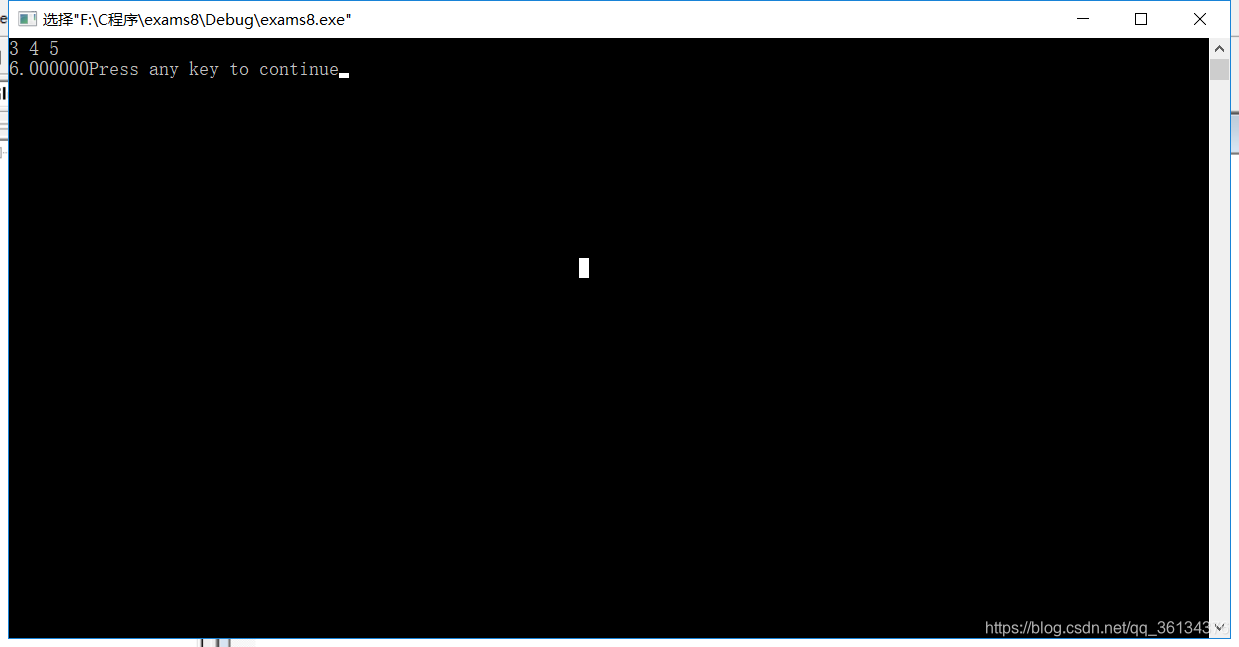C语言-求三角形面积
本文共 301 字,大约阅读时间需要 1 分钟。
一、代码
//三角形面积:(海伦公式)(p=(a+b+c)/2)//S=sqrt[p(p-a)(p-b)(p-c)]#include#include void main(){ double a,b,c; double p; double s; scanf("%lf%lf%lf",&a,&b,&c); if((a+b>c)&&(a+c>b)&&(b+c>a)){ p=(a+b+c)/2; s=sqrt(p*(p-a)*(p-b)*(p-c)); printf("%lf",s); } else printf("无法构成三角形"); }
二、结果

转载地址:http://xbch.baihongyu.com/
你可能感兴趣的文章
Nginx与Tengine安装和使用以及配置健康节点检测
查看>>
Nginx中使用expires指令实现配置浏览器缓存
查看>>
Nginx中实现流量控制(限制给定时间内HTTP请求的数量)示例
查看>>
nginx中配置root和alias的区别
查看>>
nginx主要流程(未完成)
查看>>
Nginx之二:nginx.conf简单配置(参数详解)
查看>>
Nginx从入门到精通
查看>>
Nginx代理websocket配置(解决websocket异常断开连接tcp连接不断问题)
查看>>
Nginx代理初探
查看>>
nginx代理地图服务--离线部署地图服务(地图数据篇.4)
查看>>
Nginx代理外网映射
查看>>
Nginx代理模式下 log-format 获取客户端真实IP
查看>>
Nginx代理解决跨域问题(导致图片只能预览不能下载)
查看>>
Nginx代理访问提示ERR_CONTENT_LENGTH_MISMATCH
查看>>
Nginx代理配置详解
查看>>
Nginx代理静态资源(gis瓦片图片)实现非固定ip的url适配网络环境映射ip下的资源请求解决方案
查看>>
Nginx代理静态资源(gis瓦片图片)实现非固定ip的url适配网络环境映射ip下的资源请求解决方案
查看>>
nginx优化日志拒绝特定404请求写入
查看>>
Nginx优化解析
查看>>
Nginx使用proxy_cache指令设置反向代理缓存静态资源
查看>>